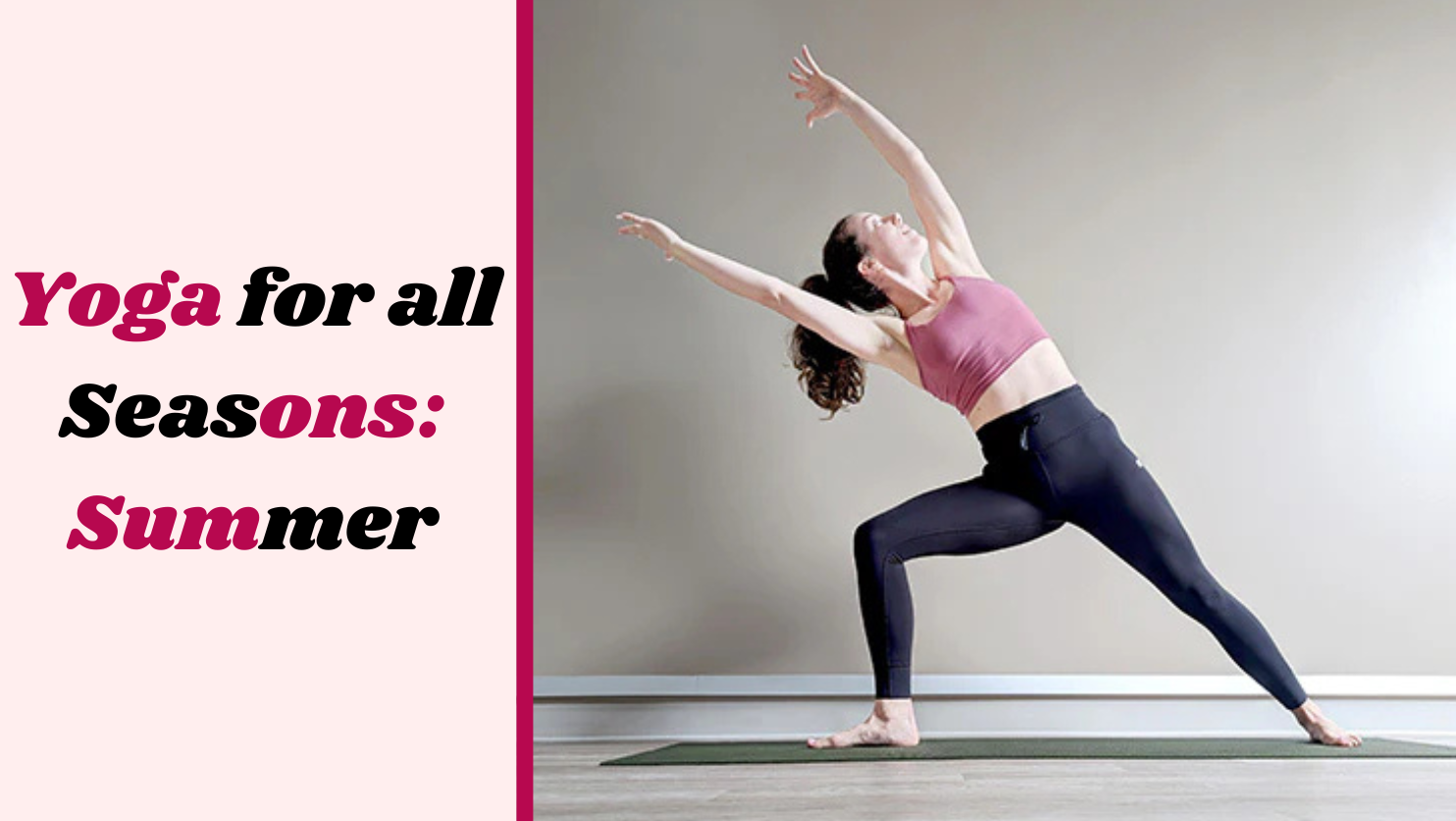Yoga is a versatile practice that can be adapted to suit the varying needs of each season. During summer, the heat and increased activity levels can impact both physical and mental well-being. By adjusting your yoga practice to align with the characteristics of summer, you can maintain balance, stay cool, and harness the season’s vibrant energy. Here are comprehensive tips and practices for incorporating yoga into your summer routine:
1. Cooling Yoga Poses
a. Forward Bends: Forward bends are inherently cooling and calming. Poses such as Uttanasana (Standing Forward Bend), Paschimottanasana (Seated Forward Bend), and Janu Sirsasana (Head-to-Knee Forward Bend) help to release heat from the body and calm the mind. These poses stretch the spine, hamstrings, and calves while promoting relaxation.
b. Gentle Twists: Gentle twists like Bharadvajasana (Seated Twist) and Supta Matsyendrasana (Reclining Twist) can aid digestion, which can be sluggish during the summer heat. Twists help to detoxify the body and release tension from the spine, further promoting a sense of coolness and calm.
c. Heart Openers: Mild heart openers such as Anahatasana (Heart Melting Pose) and Setu Bandhasana (Bridge Pose) can help open the chest and lungs, enhancing breathing and circulation. These poses also encourage a sense of openness and lightness, countering the heaviness that summer heat can bring.

2. Pranayama (Breathing Exercises)
a. Sheetali Pranayama (Cooling Breath): This specific breathing technique is designed to reduce body heat. To practice, sit comfortably, stick out your tongue, and curl the sides upwards to form a tube. Inhale through the tube created by your tongue, close your mouth, and then exhale through your nose. Repeat for several rounds to feel a cooling effect. Many participants at a Meditation Retreat in Rishikesh incorporate Sheetali Pranayama into their practice to enhance relaxation and maintain balance in the body’s temperature, especially in warm climates.
b. Sheetkari Pranayama: Similar to Sheetali, Sheetkari Pranayama also cools the body. To practice, clench your teeth lightly and part your lips. Inhale through the gaps in your teeth, feeling the cool air enter, then close your mouth and exhale through your nose. This breath is effective in reducing excess heat and calming the mind.
c. Nadi Shodhana (Alternate Nostril Breathing): Nadi Shodhana balances the body’s energy channels and promotes a sense of tranquility. It helps regulate body temperature and soothes the nervous system, making it an ideal practice for hot summer days. Perform this pranayama by closing one nostril and inhaling through the other, then switching nostrils for the exhale.
3. Mindful Meditation Practices
a. Cooling Meditation: Practice a cooling visualization meditation by imagining yourself in a cool, serene environment, such as a forest, by a lake, or on a mountain. Focus on the sensations of coolness, relaxation, and tranquility that this environment evokes. This can help reduce feelings of heat and agitation.
b. Body Scan Meditation: A body scan meditation helps you become aware of and release any tension held in the body. Lie down in Savasana (Corpse Pose) and mentally scan your body from head to toe, acknowledging and relaxing each part. This practice promotes relaxation and a sense of coolness throughout the body.

c. Moon Salutations: Incorporate Chandra Namaskar (Moon Salutations) into your practice instead of Surya Namaskar (Sun Salutations). Moon Salutations are calming and cooling, perfect for the warmer months. This sequence involves a series of poses that flow together, emphasizing slow, mindful movements and deep breathing.
4. Summer-Specific Lifestyle and Dietary Adjustments
a. Hydration: Staying hydrated is crucial during summer. Drink plenty of water throughout the day, and incorporate hydrating foods such as cucumbers, watermelon, and citrus fruits into your diet. Avoid caffeinated and alcoholic beverages that can dehydrate the body.
b. Cooling Foods: In Ayurveda, summer is the season of Pitta dosha, which is characterized by heat. To balance this, consume cooling foods like fresh fruits and vegetables, coconut water, mint, and dairy products. Avoid spicy, oily, and heavy foods that can increase heat in the body. Students attending a Yoga TTC in Rishikesh often learn about Ayurvedic principles, including dietary recommendations, to support their practice and maintain balance during different seasons.
c. Dress Appropriately: Wear light, breathable clothing made from natural fibers like cotton and linen to allow your skin to breathe and sweat to evaporate. This can help regulate body temperature and keep you cool during your yoga practice and daily activities.
d. Practice at Cooler Times: Schedule your yoga practice during the cooler parts of the day, such as early morning or late evening. Avoid practicing in the peak heat of the day, which can lead to overheating and dehydration.
Conclusion
Adapting your yoga practice to the summer season involves focusing on cooling and calming techniques that counterbalance the heat. By incorporating cooling poses, specific pranayama practices, mindful meditation, and lifestyle adjustments, you can maintain balance and well-being throughout the summer months. Embrace the vibrant energy of summer with a yoga practice that nurtures your body, mind, and spirit, ensuring you stay refreshed, rejuvenated, and in harmony with the season. Remember, the key to a successful summer yoga practice is to listen to your body and adjust accordingly, finding what works best for you.




